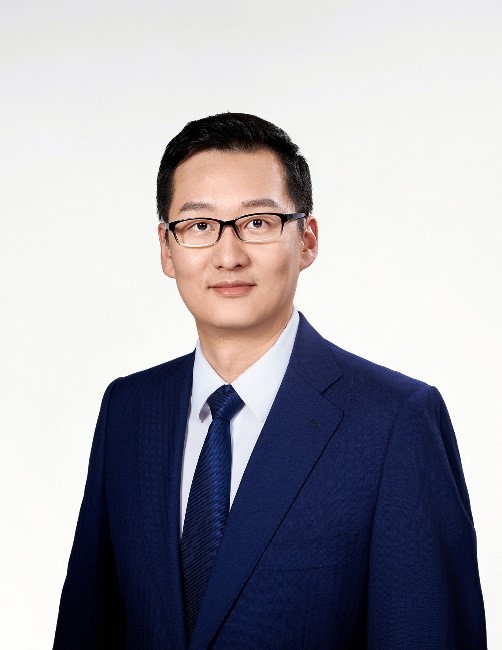
个人简历:
Dr. Xuejun Qian is a tenure-track assistant professor, researcher, doctoral supervisor, Principal Investigator (PI) of the school of Biomedical Engineering, the director of Intelligence Motivated Multimodal Ultrasound (IMMU) Lab.
Dr. Xuejun Qian received his Ph.D. in Biomedical Engineering from the University of Southern California in 2019, and then obtained the AMI Research Fellowship to enter Keck School of Medicine of the University of Southern California for his postdoctoral research. During this period, he worked with Prof. Mark Humayun (the pioneer of Bionic Eyes) to explore the application of medical ultrasound in ophthalmology.
Dr. Xuejun Qian is mainly committed to the research on medical ultrasound and intelligent diagnosis and treatment. So far, he has published more than 30 high-level research journal papers, including 20 papers as the first author or corresponding author, including Nature Biomedical Engineering, IEEE Transactions on Medical Imaging, IEEE Transactions on Biomedical Engineering, etc., which have been highly recognized by international counterparts. These papers have been cited many times by top journals such as Nature Biomedical Engineering, Science Translational Medicine, Cancer Cell, and Nature Communications, and have been recognized by international scientific media such as the American Association for the Advancement of Science (AAAS), Physics World, Applied Physics Letter News, The Science Advisory Board, etc.研究领域:
High resolution ultrasound imaging system
Multimodal AI models
High spatial-temporal resolution ultrasound neuromodulation technique
教学与课程:
BME 1307 Medical Image Processing
BME 2118 Biomedical Ultrasound
学术任职:
Editorial Board
Editor of BME Frontiers
Guest Editor of Bioengineering
Invited Reviewer
Nature Medicine、The Lancet Digital Health、Nature Communications、Science Advances、IEEE TIP/TBME/UFFC, et al.代表性论文:
(* corresponding author)
Multimodal AI models
X. Qian*, J. Pei, C. Han, ... & D. Shen. “A multimodal machine learning model for the stratification of breast cancer risk.” Nature Biomedical Engineering. (2024)
X. Qian*, J. Pei, H. Zheng, ... & K. Kirk Shung. “Prospective assessment of breast cancer risk from multimodal multiview ultrasound images via clinically applicable deep learning.” Nature Biomedical Engineering, 5, no.6, 522-532. (2021)
L. Yan, Z. Liang, H. Zhang, ... & X. Qian*. “A domain knowledge-based interpretable deep learning system for improving clinical breast ultrasound diagnosis.” Communications Medicine, 4, (1), 90. (2024)
High resolution elastography imaging
R. Li, X. Qian*, C. Gong, ... &, Q. Zhou*. “Simultaneous Assessment of the whole eye biomechanics using high frequency ultrasonic elastography.” IEEE Transactions on Biomedical Engineering, 70, no.4, 1310-1317. (2022)
X. Qian, R. Li, G. Lu, ... & Q. Zhou*. “Ultrasonic elastography to assess biomechanical properties of the optic nerve head and peripapillary sclera of the eye.” Ultrasonics, 110, 106263. (2021)
X. Qian, T. Ma, C-C. Shih, ... &, Q. Zhou*. “Ultrasonic microelastography to assess biomechanical properties of the cornea.” IEEE Transactions on Biomedical Engineering, 66, no.3, 647-655. (2018)
Super-resolution microvasculature imaging
X. Qian*, C. Huang, R. Li, ... &, Q. Zhou*. “Super-resolution ultrasound localization microscopy for visualization of the ocular blood flow.” IEEE Transactions on Biomedical Engineering, 69, no.5, 1585-1594. (2021).
X. Qian*, H. Kang, R. Li, ... &, Q. Zhou*. “In vivo visualization of eye vasculature using super-resolution ultrasound microvessel imaging.” IEEE Transactions on Biomedical Engineering, 67, no.10, 2870-2880. (2020).
论文链接:
https://scholar.google.com/citations?hl=en&user=puRYJ60AAAAJ
实验室介绍:
IMMU Lab takes advantage of engineering informatics to design and develop new microscale multifunctional and intelligent medical ultrasound in order to improve its ability to accurately diagnose and treat complex structural lesions, and finally expands research results to clinical and other engineering applications.
The main research topics include:
Ultrafast high resolution ultrasound imaging methods
Multimodal data integration approach
Artificial intelligence in medical imaging


